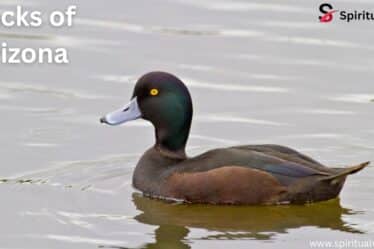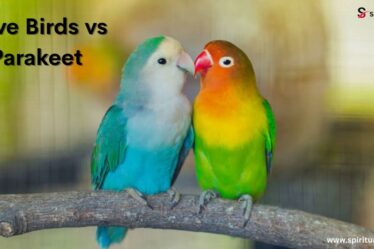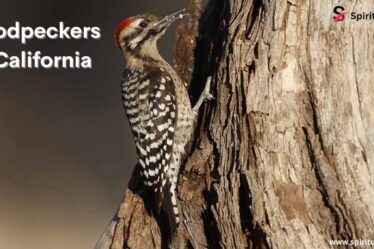
Every year, Florida becomes a rest stop for dozens of colorful migrating warblers. These small, active birds travel from far northern breeding grounds down to the tropics. During spring and fall migration, Florida’s forests, wetlands, and parks are filled with warblers stopping to rest, refuel, and refocus. Because of its location between North and South America, the state is a vital path for birds following instinct and environmental cues.
Migrating warblers—like Setophaga coronata coronata (Myrtle Warbler), Setophaga ruticilla (American Redstart), and Setophaga palmarum (Palm Warbler)—use the coastline, inland forests, and water-rich habitats as safe zones. They seek food like insects, berries, and suet to fuel their journeys. The Florida Wildlife Federation works hard to protect these critical environments. With good binoculars and a reliable field guide, birdwatchers can spot these visitors as they pass through Wakodahatchee, Merritt Island NWR, or Green Cay. Look for signs like tail-pumping, trills, and high-pitched calls that help with identification.
Florida’s Migrating Warblers

Black-and-white Warbler
The Black-and-white Warbler is one of the easiest to identify thanks to its bold black-and-white striped plumage. Unlike most warblers that flit in the canopy or shrubbery, this bird behaves more like a nuthatch, creeping along tree trunks and branches. You’ll often find them in woodlands, swamps, and mangroves throughout Florida. Their feeding style includes pecking and probing for insects and larvae hidden in bark.
They weigh around 9–12 grams and measure about 4.3 to 5.1 inches long. Their distinct behavior and markings help birders spot them during migration or wintering months. These warblers often sing a high-pitched, squeaky song, which they repeat rapidly. It’s a smart bird to look out for if you’re exploring natural parks or doing ethical birdwatching in Florida.
American Redstart
The American Redstart is one of the flashiest warblers found in Florida. Males are easy to recognize with their jet-black feathers and striking orange patches on their wings and tail. Females and immature birds are softer in color, wearing gray and yellow. These warblers are energetic insectivores that fan their tails to flush out prey in dense forest understories or along forest edges.
You’ll often hear their buzzy, high-pitched songs before you see them. This species, Setophaga ruticilla, is common during migration, and many spend winter in the state’s warmer regions. The St. Lucie Audubon Society often reports Redstart sightings in parks and reserves. Because of their brightness and behavior, they’re a favorite among Florida birders who enjoy spotting birds during migration.
Yellow Warbler

The American Yellow Warbler (Setophaga petechia) is truly sunshine in feathered form. These warblers are a solid lemon-yellow color, with chestnut streaks on their breast in males. Their song is fast and cheerful, like “sweet-sweet-sweet, I’m-so-sweet!” They breed in shrubs and wetland edges, nesting in thickets near water. Females build tidy cup-shaped nests to raise their brood.
Although some stay through summer, many pass through Florida on migration from the Caribbean or South America. Yellow Warblers are often parasitized by Brown-headed Cowbirds, which lay their eggs in the warbler’s nests. Despite this threat, the species remains common in Florida. Birders should look for them in marshes, swamps, or near streams, especially during the spring months.
Northern Parula
One of the most musical warblers in Florida is the Northern Parula. With its colorful mix of blue-gray, yellow, and a splash of chestnut, it’s hard to miss. These small birds love Spanish moss. In fact, that’s where they nest—often hanging their nests from moss or lichen-draped branches in Florida’s forests. Their song is a rising buzzy trill, like a zipper being pulled quickly.
The Northern Parula is common in both the spring and fall migrations and also breeds in northern Florida. They prefer deciduous or mixed forests, especially those near water. Birdwatchers often find them fluttering in the canopy, foraging for insects. Ethical birders are reminded not to disturb nesting sites or use recorded calls, as it causes stress to these tiny birds.
Palm Warbler
Palm Warblers (Setophaga palmarum) are a Florida favorite, often seen wagging their tails as they forage in open fields or grassy edges. Unlike other warblers, Palm Warblers are not shy. They walk along the ground, bobbing their tails constantly, making them easier to spot than most. These birds often winter in Florida, especially around Green Cay and urban parks.
Their plumage shows olive-brown upperparts and yellow underparts, with a rusty cap in the eastern population. Listen for their soft trill and look for them in pine flatwoods, marshes, or even your backyard feeder if you offer sunflower seeds or suet. As insectivores, they also help keep down pest populations in natural ecosystems. They’re a common but beautiful sight in Florida’s birding world.
Florida’s Wintering Warblers
Florida is a winter home for many warblers, and thanks to studies like HART (Habitat, Abundance, Range, Timing), researchers understand their behavior better than ever. This tracking helps scientists and organizations like the St. Lucie Audubon Society monitor changes in warbler movement and population health. Winter brings warblers like the Common Yellowthroat, Yellow-Throated Warbler, and Pine Warbler (Setophaga pinus) to the state.
During winter, these warblers settle into marshes, forests, and suburban habitats, searching for food and safe shelter. They feed on berries, seeds, and insects and may even visit bird feeders stocked with peanut butter or raisins. Birders should respect their space, avoid disturbing habitats, and never use playback recordings that may confuse or alarm them. Responsible observation helps these birds thrive during their rest period.
Warbler Species Found in Florida

Florida isn’t just a pitstop—it’s a warbler hotspot. There are at least 35 warbler species regularly found here. Some nest in the state, while others use it as a stopover during migration. From the bright Blackburnian Warbler (Setophaga fusca) to the secretive Connecticut Warbler (Oporornis agilis), each bird has a unique story, song, and coloring.
Photographers and naturalists love capturing these species, especially in places like Merritt Island NWR. Field guides like Bird Watching HQ recommend visiting forests, wetlands, and scrubland edges to find them. Knowing what to look and listen for—like a necklace of streaks, an eye-ring, or a sharp buzzy note—helps improve identification. For a deeper look, use photos and recorded songs (ethically) to enhance your birdwatching experience.
What kinds of warblers can you find in Florida?
You can find a remarkable mix of warblers in Florida, including birds that favor wetlands, pine forests, and hardwood hammocks. There are ground foragers like the Ovenbird, canopy dwellers like the Cerulean Warbler (Setophaga cerulea), and birds that haunt shrubby thickets, such as the Prairie Warbler. Some, like the Cape May Warbler, feast on spruce budworms, while others, like the Blue-Winged Warbler, search for caterpillars and spiders.
You’ll also find birds in many colors—yellow-green, black and white, slate gray, and orange. Whether it’s the Canada Warbler (Cardellina canadensis) with its necklace pattern, or the Black-Throated Green Warbler (Setophaga virens) in pine forests, each one brings a burst of life to Florida’s wild spaces. These feathered travelers rely on healthy habitats, which makes conservation and ethical birdwatching practices essential.
Conclusion
In Florida, you can find more warblers than almost anywhere else. With 35 species recorded, birdwatchers love visiting to see these colorful birds. Whether it’s spring or fall, there’s always a warbler found Florida birders get excited about. From parks to wetlands, there’s no shortage of places to explore.
Every warbler found Florida brings something unique—different songs, colors, and behaviors. You might spot a warbler found Florida in your backyard, along trails, or deep in forests. Each warbler found Florida adds to the state’s rich wildlife. For anyone who loves birds, seeing a warbler found Florida is a moment to remember. These small songbirds make Florida truly special.



